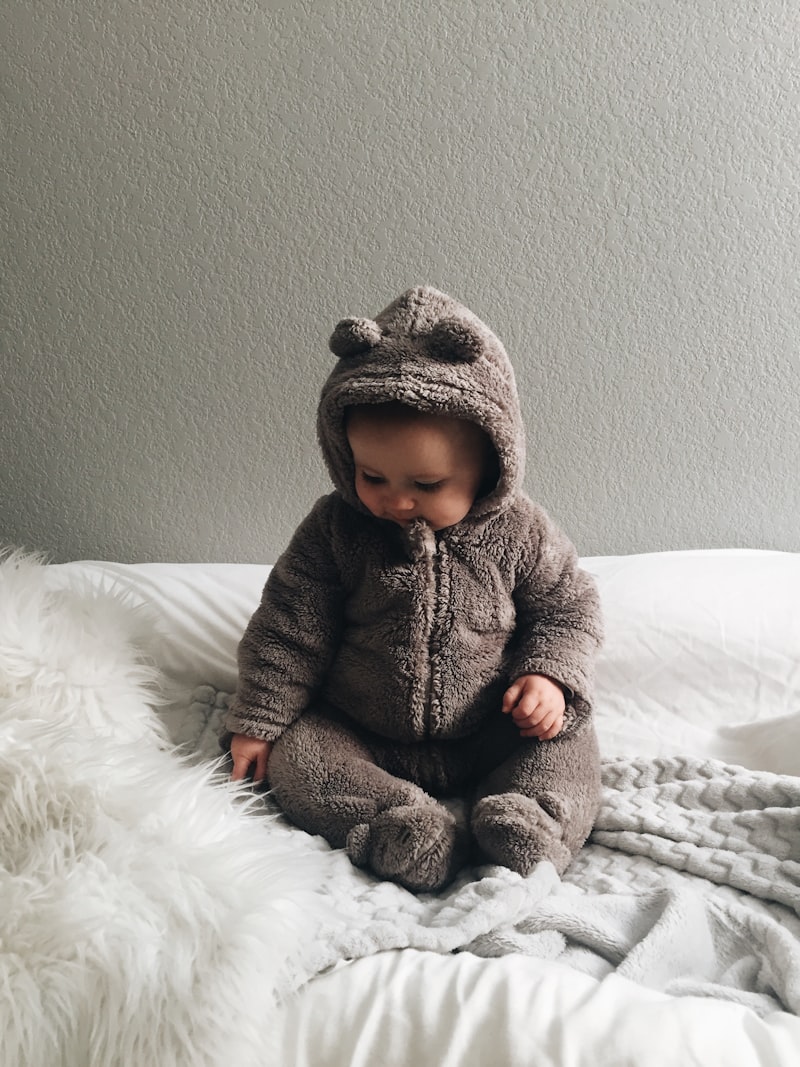First off, begin cleaning your baby’s gums even before those tiny teeth make an appearance. A soft, damp washcloth or a baby toothbrush can work wonders. Gently wiping away food particles helps prevent the buildup of bacteria that can cause decay. Think of it as a preemptive strike against future dental woes.
Once those baby teeth start to emerge, it’s time to up the ante. Use a small, soft-bristled toothbrush designed for infants. These brushes are gentle but effective, making brushing a breeze and ensuring those tiny teeth get the care they need. A rice-sized dab of fluoride toothpaste is all you need. Yes, fluoride can be safe in small amounts and helps in strengthening those pearly whites.
It’s also crucial to establish a routine. Aim for brushing twice a day—morning and night. Consistency is key here; it’s like setting a bedtime story, but for your baby’s dental health. And remember, dental visits shouldn’t wait until all teeth have come in. The American Dental Association suggests that the first visit should be around your baby’s first birthday. These early visits help spot any issues and get your baby accustomed to the dentist’s office.
Lastly, be mindful of your baby’s diet. Avoid sugary snacks and drinks, as they can lead to early tooth decay. Instead, focus on nutrient-rich foods that support overall health. It’s all about balance—like teaching your baby to enjoy both a healthy meal and the joy of a sweet treat in moderation.
Top 7 Essential Tips for Maintaining Your Baby’s Oral Health
First off, start early. Even before those first teeth pop through, gently wipe your baby’s gums with a soft, damp cloth after feedings. It’s like giving their gums a little spa treatment, helping to clear away any lingering milk residue. Once those first pearly whites appear, switch to a soft-bristled baby toothbrush. It’s small and gentle, just right for those delicate little teeth.
Next, be consistent with brushing. Aim for twice a day—once in the morning and once before bed. Imagine brushing as a fun routine rather than a chore. Sing a silly song or make funny faces to make it a joyful experience for both of you.
Fluoride is another important player in the game. It’s like a superhero for your baby’s teeth, helping to strengthen enamel and prevent cavities. However, make sure to use only a tiny smear of fluoride toothpaste, as too much can be harmful.
Don’t forget about those frequent check-ups with your pediatric dentist. Think of them as regular tune-ups for your baby’s oral health, ensuring everything is on track. And when it comes to snacking, opt for healthy choices and avoid sugary treats that can lead to cavities.
Lastly, be mindful of teething. It can be tough, but teething rings or a cool, damp washcloth can soothe sore gums and help ease the discomfort.
Early Smiles: How to Start Your Baby’s Dental Care Routine Right
First off, even before your baby’s teeth make an appearance, you can begin laying the groundwork. Gently wipe their gums with a soft, damp cloth after feedings. This not only helps remove bacteria but also gets your little one used to having their mouth cleaned.
Once those tiny teeth begin to peek through—typically around six months—switch to a soft-bristled baby toothbrush. You don’t need to use toothpaste just yet. A smear of water will do the trick. Brushing twice a day helps establish a routine and ensures you’re keeping plaque at bay. It’s a bit like setting a daily habit that will pay off big time in the long run.
Now, let’s talk about that magical moment when your baby’s teeth start touching each other. This is when you can introduce fluoride toothpaste. Use a tiny, pea-sized amount, and keep brushing twice a day. At this stage, your baby might start to resist, and that’s normal. Turning brushing time into a fun game or singing a silly song can make the experience more enjoyable for both of you.
And remember, even though those baby teeth will eventually fall out, they play a crucial role in your child’s oral health. They help with eating, speaking, and even guiding the permanent teeth into place. So, think of early dental care as investing in a bright future for your child’s smile!
The Ultimate Guide to Baby Dental Care: What Every Parent Needs to Know
Once those first pearly whites appear, usually around six months, it’s time to introduce a soft-bristled baby toothbrush. Use a rice-sized amount of fluoride toothpaste. Yes, fluoride is safe and effective in preventing cavities – just make sure to supervise your baby to avoid swallowing too much toothpaste.
Now, let’s talk about teething. It’s a phase filled with drool and discomfort, but a chilled teething ring can offer relief. As your baby grows, they’ll start munching on more solid foods, and that’s when brushing twice a day becomes crucial. It’s not just about cleanliness; it’s about setting a foundation for lifelong dental habits.
Regular dental check-ups should begin by your baby’s first birthday. Think of it as a way to get their smile checked by an expert before any issues arise. It’s also a great opportunity to learn more about proper brushing techniques and dietary tips from your dentist.
And here’s a golden nugget: avoid sugary drinks and snacks. They can lead to cavities faster than you can say “sugar rush.” Water and healthy snacks are your allies in this journey.
From First Tooth to Brushing Techniques: Expert Advice on Baby Dental Hygiene

First things first, it’s essential to start cleaning those first teeth as soon as they appear. Think of it as giving their smile a fresh start every day. Use a soft, baby-sized toothbrush and a tiny amount of fluoride toothpaste. Yes, just a smear, as it’s not about cleaning a whole meal off, but rather keeping their mouth fresh and healthy.
You might wonder how to handle brushing a tiny set of teeth that aren’t even fully in yet. Don’t fret! Gently brushing in circular motions ensures you’re reaching all those little crevices. And, here’s a neat trick: sing a little song or make brushing a game. It turns a chore into a cheerful routine.
As more teeth come in, it’s time to refine those brushing techniques. Experts recommend brushing twice a day—once in the morning and once before bed. Just like adults, your baby’s teeth need regular cleaning to ward off cavities and keep their gums healthy.
Now, let’s talk about those tiny dental tools you might want to consider. There are finger brushes that fit right on your finger, making it easy to gently clean their teeth and gums. And don’t forget about regular dental check-ups! Even though they’re just baby teeth, seeing a dentist can set the stage for a lifetime of good dental habits.
So, whether you’re navigating the world of baby toothpaste or figuring out the best brushing rhythm, remember: a bit of care now can lead to a bright, healthy smile in the future.
Preventing Cavities Early: Best Practices for Your Baby’s Teeth
First off, even before those adorable little teeth make their debut, it’s a good idea to clean your baby’s gums. Gently wipe their gums with a soft, damp cloth after feedings. It might sound a bit extra, but this helps get rid of lingering milk sugars that can be a cavity’s best friend.
Once those tiny teeth start popping through, switch to a baby toothbrush. It doesn’t have to be anything fancy—just a soft-bristled brush that fits comfortably in your hand. Brush your baby’s teeth twice a day using a small smear of fluoride toothpaste. It’s like a tiny bit of magic that helps protect those teeth from cavities. And remember, fluoride is crucial, but don’t overdo it; just a rice-sized amount is perfect.
Diet plays a huge role too. Avoid giving your baby sugary snacks and drinks. Imagine their little teeth as sponges soaking up everything they come into contact with—sugars and acids included. Instead, opt for nutritious snacks like fruit and veggies, which are not only good for their health but also less likely to harm their teeth.
Regular dental check-ups should be on your radar as well. By the time your baby turns one, scheduling that first dentist visit can help catch any potential issues early. It’s like having a coach for those tiny teeth, making sure they’re growing strong and healthy.
Newborn to Toddler: A Step-by-Step Guide to Optimal Baby Dental Care

As soon as your baby’s first tooth peeks through, it’s time to shift gears into dental care mode. It might seem a bit early, but maintaining oral hygiene from the start sets the stage for a healthy smile. Think of it as planting seeds for a lush garden – the earlier you start, the better the results.
For newborns, the focus isn’t on brushing but on cleaning. Use a soft, damp cloth to gently wipe your baby’s gums after feedings. It’s like giving their gums a refreshing cleanse, removing leftover milk and helping them get used to the routine.
Once those first tiny teeth start making an appearance, it’s time to upgrade to a baby toothbrush with soft bristles. It’s like upgrading from a washcloth to a miniature broom – both tools are essential, but each serves a different purpose. Brush twice a day with a tiny smear of fluoride toothpaste (the size of a grain of rice) to keep those teeth clean and strong.
As your baby grows into a toddler, their teeth start coming in more densely, and dental care becomes a bit more involved. Toddlers love to explore and play, and that includes experimenting with their own toothbrush. It’s a fun game for them, but make sure you’re still giving those little teeth a thorough brushing twice daily. By this age, you can introduce a fluoride toothpaste in a pea-sized amount, because they’re better at spitting it out rather than swallowing.
And don’t forget about those dental checkups! It might seem early, but seeing a pediatric dentist can catch any potential issues before they become problems. Plus, it’s a great way for your toddler to get familiar with the dentist’s office – think of it as a friendly visit rather than a scary one.
Frequently Asked Questions
What Type of Toothbrush and Toothpaste is Best for My Baby
For babies, use a soft-bristled toothbrush with a small head to gently clean their teeth and gums. Choose a fluoride-free toothpaste specifically designed for infants to ensure safety and minimize swallowing concerns.
How Often Should I Clean My Baby’s Gums and Teeth
Clean your baby’s gums twice daily, especially after feedings, and start brushing their teeth twice a day with a soft-bristled brush as soon as they emerge.
When Should I Schedule My Baby’s First Dental Visit
Schedule your baby’s first dental visit by their first birthday or within six months of their first tooth emerging. Early visits help monitor oral health and address any potential issues early.
When Should I Start Brushing My Baby’s Teeth
Begin brushing your baby’s teeth as soon as they appear, typically around six months old. Use a soft-bristled brush and a tiny smear of fluoride toothpaste. This helps establish good oral hygiene early and prevents tooth decay.
How Can I Prevent Cavities in My Baby’s Teeth
To prevent cavities in your baby’s teeth, ensure proper oral hygiene by cleaning their gums with a soft cloth before teeth appear and brushing their teeth twice daily with a fluoride toothpaste once they emerge. Avoid giving sugary foods and drinks, and schedule regular dental check-ups to monitor their dental health.


